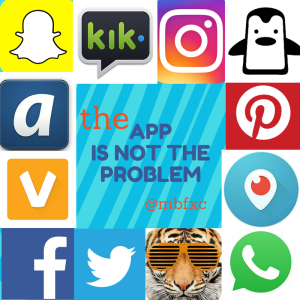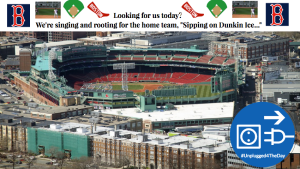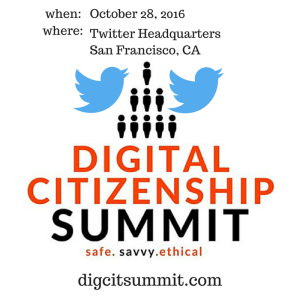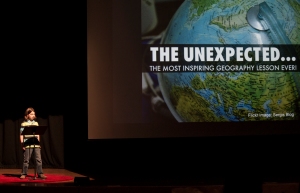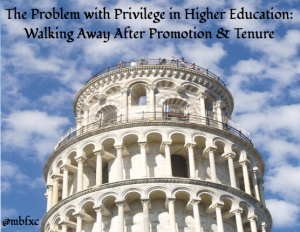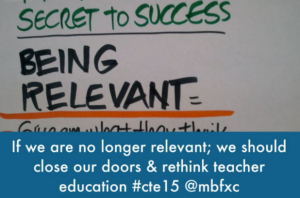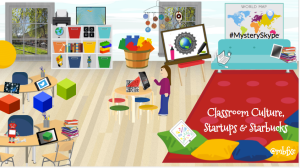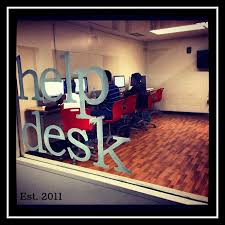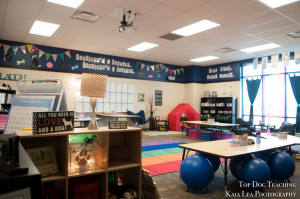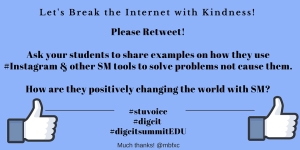“Dare to do what you dream. Search your heart to know what you most desire to do; then do it, for you can become, by perseverance, what you long to be.”
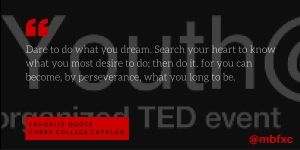 This is the story I did not get to tell this weekend at @TEDxYouthBHS, so I’d like to share it during National Teacher Appreciation Week. I have lived these words since I was in high school. Back then, college catalogs were sent to your home. I remember running to check my mailbox, I mean the mailbox outside my home. I used to love flipping through those catalogs wondering if I had what it took to go to college. I actually used this quote as my college essay and it has guided me ever since.
This is the story I did not get to tell this weekend at @TEDxYouthBHS, so I’d like to share it during National Teacher Appreciation Week. I have lived these words since I was in high school. Back then, college catalogs were sent to your home. I remember running to check my mailbox, I mean the mailbox outside my home. I used to love flipping through those catalogs wondering if I had what it took to go to college. I actually used this quote as my college essay and it has guided me ever since.
When I was in the third grade, I was diagnosed as being dyslexic. What an awful word diagnosed is. It is a label that has haunted me the majority of my academic career. It has tried to define me and limit my opportunities. To compensate, I used the smoke and mirror approach and perfected the art of storytelling. This was my secret weapon, my ultimate super power because it kept my secret safe. But the fact is, I struggled in a traditional classroom.
I could tell you all about the people in my life who treated me as my diagnosis, but I’m going to focus on the people who believed in me. Just like the children’s author, Patricia Polacco, also diagnosed as dyslexic thanked Mr. Faulker for being the teacher who changed her life, I’d like to thank my parents, my sixth grade teacher, Mrs. Lane, my seventh grade teachers, Mr. McGrath and Mrs. Cronin, my high school soccer coach, Mr. Mac, my high school English teacher, Mrs. Howard and a student teacher named Ms. Loeb who literally saved me during Latin I.
If you notice, I did not have one teacher on my side until I was in the sixth grade. My most fundamental years when all students should be building their foundation, the only people who believed in me were my parents and unfortunately, when you’re young, you think your parents have to feel that way. You don’t realize until years later that they were right all along. Up until the sixth grade, I saw myself the way the majority of adults in my life did.
But, I remember every moment of the sixth grade because Mrs. Lane saw me as extraordinary. Every student should feel this way. Each of us is a gift to the world. Imagine how different our world would be if we took the time to notice and recognize the talents that we individually bring to the classroom everyday. It was that year that I remember bringing home a great report card. I remember sitting at the head of the table and having a special dinner and a cake in my honor. I distinctly remember having my first real dream, I wanted to be an actress like Barbara Streisand in Hello Dolly. The idea of being an actress was so attractive because I could be anyone I wanted to be.
When I was in junior high, I remember hiding in the bathroom because I didn’t want anyone to see me walking down that hallway to that room where only those kids went. I cried every day in the seventh grade and my parents pulled me out of special ed. Although I never had to walk down that hallway to that classroom with those kids again, the label remained. As a level 3/4 student, there was really no expectation from the majority of my teachers for me to go to college. Even my high school guidance counselor told me college was not an option. But, my parents encouraged me and so, when those college catalogs came in, I devoured them because in many ways, they were part of my dream.
My dream continues as I have pursued my education to the highest possible degree. As a Doctor of Philosophy, a Ph.D., I have made it my life’s mission to empower others and amplify student voice. It should come as no surprise that I began my teaching career in a middle school as a sixth grade teacher modeling myself around the teachers who saw me as extraordinary. Since I began my career in 1993, I have been a middle school teacher, principal, associate professor in a school of education and an ambassador for student voice.
Looking back and reflecting on my learning style, I was a connected learner way before social media even existed. If I was growing up today, not only would I have digital access to learn with the world like my son described, but I’d have access to learn with tools that level the playing field for all students.
I stand here today to share with you the importance of dreams and aspirations. To encourage you to expect more than others might expect from you and to know that anything is possible. I stand here today as an example that your risks will be your reward. I stand here today proud that my diagnosis and label has not defined me or limited me. For anyone who learns differently, my story is your story and I dare you to do what you dream. Search your heart to know what you most desire to do; then do it, for you can become, by perseverance, what you long to be.
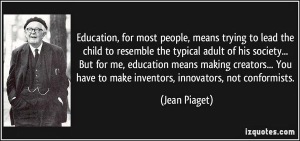 A huge thanks to Dan McCabe for tweeting out this quote because I can’t stop thinking about it. I’m officially breaking up with boring, conformity and status quo (and while I’m at it, I’m breaking up with worksheets and students sitting idly at desks in rows too). I’ve had enough. It is an unhealthy relationship and the results are damaging the future for our students.
A huge thanks to Dan McCabe for tweeting out this quote because I can’t stop thinking about it. I’m officially breaking up with boring, conformity and status quo (and while I’m at it, I’m breaking up with worksheets and students sitting idly at desks in rows too). I’ve had enough. It is an unhealthy relationship and the results are damaging the future for our students.
